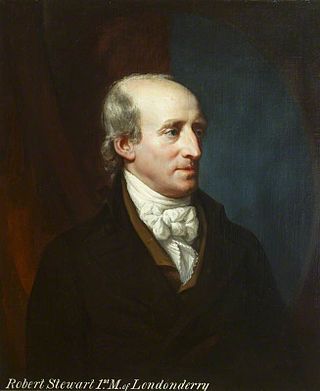
Robert Stewart, 1st Marquess of LondonderryPC (Ire) (1739–1821), was a County Down landowner, Irish Volunteer, and member of the parliament who, exceptionally for an Ulster Scot and Presbyterian, rose within the ranks of Ireland's "Anglican Ascendancy." His success was fuelled by wealth acquired through judicious marriages, and by the advancing political career of his son, Viscount Castlereagh. In 1798 he gained notoriety for refusing to intercede on behalf of James Porter, his local Presbyterian minister, executed outside the Stewart demesne as a rebel.

The House of Stuart, originally spelled Stewart, was a royal house of Scotland, England, Ireland and later Great Britain. The family name comes from the office of High Steward of Scotland, which had been held by the family progenitor Walter fitz Alan. The name Stewart and variations had become established as a family name by the time of his grandson Walter Stewart. The first monarch of the Stewart line was Robert II, whose male-line descendants were kings and queens in Scotland from 1371, and of England, Ireland and Great Britain from 1603, until 1714. Mary, Queen of Scots, was brought up in France where she adopted the French spelling of the name Stuart.
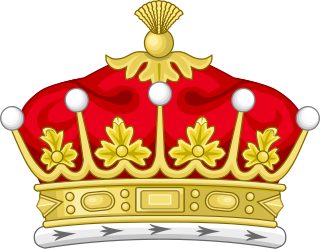
Earl Castle Stewart, in the County Tyrone, is a title in the Peerage of Ireland. It was created in 1800 for Andrew Thomas Stewart, 9th Baron Castle Stuart.
The Peerage of the United Kingdom is one of the five Peerages in the United Kingdom. It comprises most peerages created in the United Kingdom of Great Britain and Ireland after the Acts of Union in 1801, when it replaced the Peerage of Great Britain. New peers continued to be created in the Peerage of Ireland until 1898
There are currently two earldoms of Mar in the Peerage of Scotland, and the title has been created seven times. The first creation of the earldom is currently held by Margaret of Mar, 31st Countess of Mar, who is also clan chief of Clan Mar. The seventh creation is currently held by James Erskine, 14th Earl of Mar and 16th Earl of Kellie, who is also clan chief of Clan Erskine.
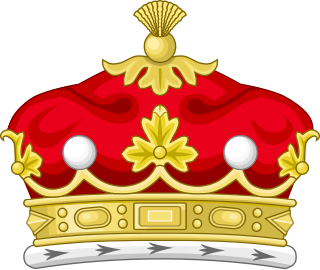
Marquess of Londonderry, of the County of Londonderry, is a title in the Peerage of Ireland.

The title Earl of Morton was created in the Peerage of Scotland in 1458 for James Douglas of Dalkeith. Along with it, the title Lord Aberdour was granted. This latter title is the courtesy title for the eldest son and heir to the Earl of Morton.

The Mormaer or Earl of Buchan was originally the provincial ruler of the medieval province of Buchan. Buchan was the first Mormaerdom in the High Medieval Kingdom of the Scots to pass into the hands of a non-Scottish family in the male line. The earldom had three lines in its history, not counting passings from female heirs to sons. Today, it is held by the Erskine family as a peerage. The current holder is Harry Erskine, 18th Earl of Buchan.

Earl of Eglinton is a title in the Peerage of Scotland. It was created by James IV of Scotland in 1507 for Hugh Montgomerie, 3rd Lord Montgomerie.

Earl Ferrers is a title in the Peerage of Great Britain. It was created in 1711 for Robert Shirley, 14th Baron Ferrers of Chartley. The Shirley family descends from George Shirley of Astwell Castle, Northamptonshire. In 1611 he was created a Baronet, of Staunton Harold in the County of Leicester, in the Baronetage of England. He was succeeded by his son Henry, the second Baronet, who married Lady Dorothy Devereux, daughter of Robert Devereux, 2nd Earl of Essex. On the death of her brother Robert Devereux, 3rd Earl of Essex, she became the youngest co-heir to the baronies of Ferrers of Chartley and the barony of Bourchier, which had fallen into abeyance on the death of the third Earl. Shirley was succeeded by his eldest son, the third Baronet. He died unmarried and was succeeded by his younger brother, the fourth Baronet. He was imprisoned in the Tower of London by Oliver Cromwell and died there in 1656. On his death the title passed to his eldest son, the fifth Baronet. He died at an early age and was succeeded at birth by his posthumous son, the sixth Baronet.
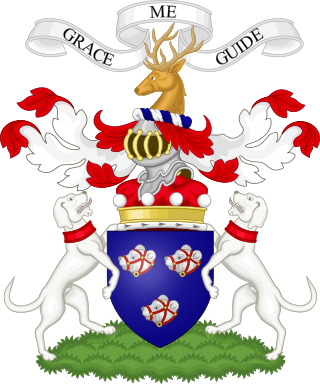
Lord Forbes is the senior Lordship of Parliament in the Peerage of Scotland.

Lord Gray is a title in the Peerage of Scotland. The Barony of Gray was created circa July 1445 for the Scottish diplomat and politician Sir Andrew Gray. The first Lord Gray was a hostage in England for the good conduct of James I of Scotland from 1424 to 1427, and was one of the knights who accompanied Lady Margaret Stewart to France for her marriage to Louis XI of France in 1436.

Lord Sempill is a title in the Peerage of Scotland. It was created in circa 1489 for Sir John Sempill, founder of the collegiate Church of Lochwinnoch. Sempill was killed at the Battle of Flodden in 1513. His grandson, the third Lord, was known as "The Great Lord Sempill". His grandson, the fourth Lord, was Ambassador from King James VI of Scotland to Spain in 1596. The male line failed on the death of his great-grandson, the eighth Lord, in 1684. He was succeeded by his sister Anne, wife of Robert Abercromby, who in 1685 was created Lord Glassford for life. In 1688 she obtained a new charter settling the lordship of Sempill in default of male issue, upon her daughters without division by her then and any future husband. Her younger son, the twelfth Lord, commanded the left wing of the government army at the Battle of Culloden in 1746.

Lord Torphichen or Baron Torphichen is a title in the Peerage of Scotland. It was created by Queen Mary in 1564 for Sir James Sandilands, with remainder to his heirs and assigns whatsoever. John Horne Stevenson, Marchmont Herald, wrote in “Dignities” That the barony of Torphichen was the only possible exception to the general rule that peerages cannot be transmitted and must be inherited.

Earl of Darnley is a hereditary title that has been created three times, twice in the Peerage of Scotland and once in the Peerage of Ireland.
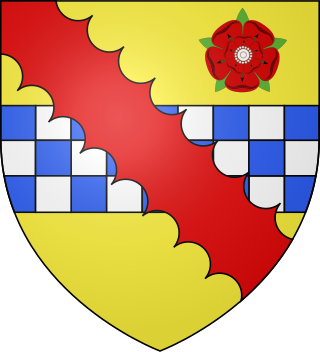
Walter Stewart, 1st Lord Blantyre (1555–1617) was a Scottish courtier and politician. He was Keeper of the Privy Seal of Scotland from 1582 to 1596 and Treasurer of Scotland from 1596 to 1599.

Clan Stewart (Gaelic: Stiùbhart) is a Scottish Highland and Lowland clan. The clan is recognised by Court of the Lord Lyon; however, it does not have a Clan Chief recognised by the Lord Lyon King of Arms. Because the clan has no chief it can be considered an armigerous clan; however, the Earls of Galloway are now considered to be the principal branch of this clan, and the crest and motto of The Earls of Galloway's arms are used in the Clan Stewart crest badge. The Court of the Lord Lyon recognises two other Stewart/Stuart clans, Clan Stuart of Bute and Clan Stewart of Appin. Clan Stuart of Bute is the only one of the three clans at present which has a recognised chief.
There have been five baronetcies created for people with the surname Forbes, four in the Baronetage of Nova Scotia and one in the Baronetage of the United Kingdom. The first holder of the Burn baronetcy of Jessfield, created in the Baronetage of the United Kingdom in 1923, assumed the surname of Forbes-Leith of Fyvie in 1925.

Charles Stuart, 12th Lord Blantyre,, styled Master of Blantyre from birth until 1830, was a Scottish nobleman and landowner with 14,100 acres (57 km2) of titled lands.
Alexander Stuart, 5th Lord Blantyre was a Scottish nobleman, a soldier and politician.













